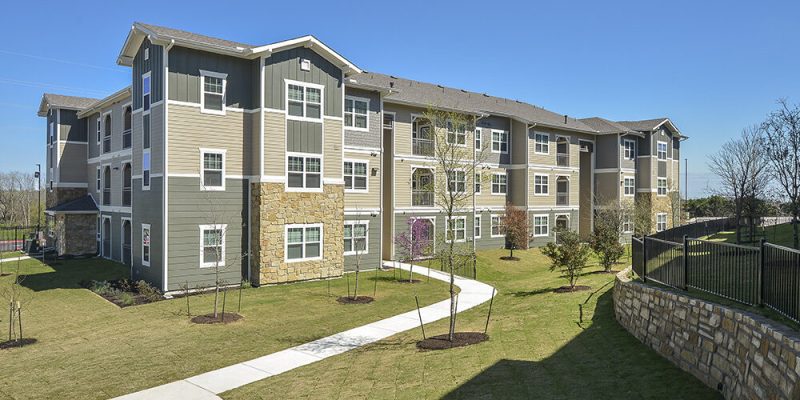Resyndication in Real Estate: Definition, Process, and Benefits

In real estate investment, particularly in affordable housing, maintaining and improving properties over time requires new funding sources. This is where resyndication comes into play.
Resyndication refers to refinancing or restructuring an existing real estate investment by forming a new investment group. This helps secure fresh capital, extend affordability periods, and upgrade properties.
- In this article, we’ll cover:
What resyndication means in real estate
The step-by-step resyndication process
Why investors and developers choose resyndication
Pros and cons of resyndication
How resyndication impacts affordable housing
Let’s explore how resyndication works and why it’s a vital tool in real estate!
What is Resyndication?
Definition of Resyndication
Resyndication is the process of restructuring or refinancing a real estate investment by bringing in new investors, new tax credits, or additional financing to improve and maintain a property.
- Common in affordable housing, commercial real estate, and low-income housing tax credit (LIHTC) projects.
Typically occurs after 10-15 years, when initial tax credits expire, and new capital is needed for property upgrades.
Often involves reapplying for government incentives or tax credits to secure funding.
Think of it as a “refresh” for a real estate investment, ensuring it remains financially viable and well-maintained.
How Does the Resyndication Process Work?
The resyndication process involves multiple stages, each ensuring the property remains financially sustainable.
Initial Funding & Investment Period (Years 1-15)
- A real estate project is funded by an initial group of investors.
Investors receive tax benefits (such as LIHTCs) for up to 15 years.
During this period, the property generates income and is maintained.
Example: A developer builds a low-income housing project using LIHTC tax credits and investor funding.
Property Evaluation & Need for Resyndication (Years 10-15)
- After 10-15 years, the original investment structure expires or becomes less profitable.
The property may need renovations, repairs, or refinancing.
Developers assess whether resyndication is necessary.
Example: A 100-unit affordable housing complex needs new plumbing and electrical upgrades.
Securing New Funding Sources
- The property applies for new tax credits or government programs.
A new investment group is formed, often with both old and new investors.
Additional funding may come from private investors, loans, or grants.
Example: A developer reapplies for LIHTCs and secures $5 million in new investment capital.
Restructuring Ownership & Renovations
- The property is legally transferred to the new investment group.
Investors fund property improvements, such as:
New roofing, electrical systems, plumbing, and safety upgrades.
Energy efficiency improvements (solar panels, better insulation).
Extended affordability periods (for affordable housing projects).
Example: A senior housing complex undergoes ADA accessibility upgrades after resyndication.
Continued Operations & Profitability
- The property continues generating income while providing housing or commercial space.
The new investors earn returns while benefiting from fresh tax credits or incentives.
After another 10-15 years, the cycle may repeat if needed.
Example: A shopping mall secures new funding to improve infrastructure, attracting higher-paying tenants.
Why Do Investors & Developers Choose Resyndication?
For Investors
- New Investment Opportunity – Offers access to new real estate deals.
Tax Benefits – Syndicated projects may qualify for new tax credits.
Higher ROI Potential – Properties gain value after renovations.
For Developers & Property Owners
- Fresh Capital – Provides funding for property improvements & maintenance.
Extended Affordability – Keeps properties affordable for longer periods.
Higher Property Value – Renovations attract higher-paying tenants.
For Communities & Residents
- Preserves Affordable Housing – Ensures low-income residents keep their homes.
Improves Living Conditions – Upgrades safety, infrastructure, and energy efficiency.
Boosts Local Economy – Creates jobs and revitalizes neighborhoods.
Example: A low-income apartment complex in Los Angeles is syndicated, securing new funding for renovations and keeping rents affordable.
Pros and Cons of Resyndication
| Pros | Cons |
| Extends property life & value | Complex legal & financial process |
| Provides fresh capital for improvements | Requires new investor negotiations |
| Helps maintain affordable housing | Not all properties qualify for new tax credits |
| Attracts better tenants & businesses | Market conditions may affect returns |
Pro Tip: Work with experienced real estate consultants to navigate the complexities of resyndication.
Resyndication & Affordable Housing: A Critical Connection
Many low-income housing projects rely on tax credits like LIHTC to remain viable.
- Without resyndication, rental prices may rise once tax credits expire.
Resyndication helps extend affordability periods (often another 15 years).
Cities & states encourage resyndication to prevent housing shortages.
Example: A 200-unit housing complex in New York secures new funding through resyndication, ensuring low-income families can stay in their homes.
Conclusion
- Key Takeaways:
Resyndication allows real estate properties to secure fresh capital, refinance, and improve infrastructure.
It extends affordability periods, making it crucial for affordable housing projects.
Investors benefit from new tax credits, rental income, and increased property value.
The process involves securing new funding, forming a new investment group, and making property upgrades.
Final Thought: Resyndication is a powerful financial tool that benefits investors, developers, and communities—ensuring properties remain profitable, sustainable, and affordable.
Want to explore resyndication opportunities? Contact a real estate investment expert today!
FAQs
1. What is the main goal of resyndication?
To refinance a property by forming a new investment group, securing fresh capital, and extending affordability.
2. How does resyndication benefit investors?
Investors gain new tax credits, fresh investment opportunities, and long-term rental income.
3. Can commercial real estate projects be syndicated?
Yes! Shopping malls, office buildings, and industrial properties can be syndicated to fund upgrades.
4. Is resyndication only for affordable housing?
No, but it is commonly used in low-income housing to maintain affordability.
5. What challenges exist in resyndication?
Legal complexities, finding new investors, and securing tax credits can make the process challenging.
Also read: Costa Rica Monteverde: 10 Unforgettable Experiences in the Cloud Forest











